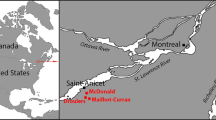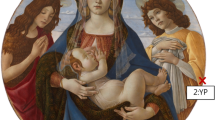Abstract
The present review article reports the most innovative methods to detect proteins in historical and archeological samples as well as to characterize proteins used as binders in artworks. Difficulties to ascribe proteins to a certain animal species are often due to post-translational modifications originated by chemical or microbial deterioration during aging. Combining different techniques such as peptide mass fingerprinting and tandem mass spectrometry can solve some of these problems and also allow discrimination between taxonomically related species like sheep and goat. The most studied proteins in bones and textile samples are osteocalcin, collagen and keratin, whereas egg yolk and white proteins, casein and collagen are the most relevant for binders used in old paintings. With the suitable approaches (immune-based methods, DOT-blot, etc…) it is also possible to obtain in situ characterization or analyze the samples directly in the museum laboratories, with the advantage of avoiding artwork damage and expensive external commitments. Recent cutting-edge strategies allowed detection of proteinaceous infection markers that, for instance, were used to establish the cause of death of old Inca mummies and also proved the presence of Yersinia pestis in old documents dating from the period in 17th century in which the plague ravaged Europe.






Similar content being viewed by others
References
Asara JM, Schweitzer MH, Freimark LM, Phillips M, Cantley LC (2007) Protein sequences from mastodon and Tyrannosaurus rex revealed by mass spectrometry. Science 316:280–285
Bos KI, Schuenemann VJ, Golding GB, Burbano HA, Waglechner N, Coombes BK, McPhee JB, DeWitte SN, Meyer M, Schmedes S, Wood J, Earn DJ, Herring DA, Bauer P, Poinar HN, Krause J (2011) A draft genome of Yersinia pestis from victims of the Black Death. Nature 478:506–510
Brown KA (2001) Identifying the sex of human remains by ancient DNA analysis. Anc Biomol 3:215
Brown S, Higham T, Slon V, Pääbo S, Meyer M, Douka K, Brock F, Comeskey D, Procopio N, Shunkov M, Derevianko A, Buckley M (2016) Identification of a new hominin bone from Denisova Cave, Siberia using collagen fingerprinting and mitochondrial DNA analysis. Sci Rep 6:23559
Buckley M, Collins M, Thomas-Oates J, Wilson JC (2009) Species identification by analysis of bone collagen using matrix-assisted laser desorption/ionisation time-of-flight mass spectrometry. Rapid Commun Mass Spectrom 23:3843–3854
Buckley M, Collins MJ (2011) Collagen survival and its use for species identification in Holocene-lower Pleistocene bone fragments from British archaeological and paleontological sites. Antiqua 1:1–7
Buckley M, Fraser S, Herman J, Melton ND, Mulville J, Pálsdóttir AH (2014) Species identification of archaeological marine mammals using collagen fingerprinting. J Archaeol Sci 41:631–641
Buckley M, Warwood S, van Dongen B, Kitchener AC, Manning PL (2017) A fossil protein chimera; difficulties in discriminating dinosaur peptide sequences from modern cross-contamination. Proc R Soc B 284:20170544
Buckley M, Whitcher Kansa S, Howard S, Campbell S, Thomas-Oates J, Collins M (2010) Distinguishing between archaeological sheep and goat bones using a single collagen peptide. J Archaeol Sci 37:13–20
Colombini MP, Modugno F (2004) Characterization of proteinaceous binders in artistic paintings by chromatographic techniques. J Sep Sci 27:147–146
Corthals A, Koller A, Martin DW, Rieger R, Chen EI, Bernaski M, Recagno G, Dávalos LM (2012) Detecting the immune system response of a 500 year-old Inca mummy. PLoS One 7:e41244
D’Amato A, Zilberstein G, Zilberstein S, Compagnoni BL, Righetti PG (2018) Of mice and men: traces of life in the death registries of the 1630 plague in Milano. J Proteome. https://doi.org/10.1016/j.jprot.2017.11.028
Dallongeville S, Koperska M, Garnier N, Reille-Taillefert G, Rolando C, Tokarski C (2011) Identification of animal glue species in artworks using proteomics: application to a 18th century gilt sample. Anal Chem 83:9431–9437
Dallongeville S, Richter M, Schäfer S, Kühlenthal M, Garnier N, Rolando C, Tokarski C (2013) Proteomics applied to the authentication of fish glue: application to a 17th century artwork sample. Analyst 138:5357–5364
Dallongeville S, Garnier N, Rolando C, Tokarski C (2016) Proteins in art, archaeology, and paleontology: from detection to identification. Chem Rev 116:2–79
Demarchi B, O’Connor S, de Lima Ponzoni A, de Almeida Rocha Ponzoni R, Sheridan A, Penkman K, Hancock Y, Wilson J (2014) An integrated approach to the taxonomic identification of prehistoric shell ornaments. PLoS One 9:e99839
Demarchi B, Williams MG, Milner N, Russell N, Bailey G, Penkman K (2011) Amino acid racemization dating of marine shells: a mound of possibilities. Quat Int 239:114–124
Evershed RP, Turner-Walker G, Hedges REM, Tuross N, Leyden A (1995) Preliminary results on the analysis of lipids in ancient bone. J Archaeol Sci 22:277–290
Fiddyment S, Holsinger B, Ruzzier C, Devine A, Binois A, Albarella U, Fischer R, Nichols E, Curtis A, Cheese E, Teasdale MD, Checkley-Scott C, Milner SJ, Rudy KM, Johnson EJ, Vnouček J, Garrison M, McGrory S, Bradley DG, Collins MJ (2015) Animal origin of 13th-century uterine vellum revealed using noninvasive peptide fingerprinting. Proc Natl Acad Sci U S A 112:15066–15071
Gambino M, Cappitelli F, Cattò C, Carpen A, Principi P, Ghezzi L, Bonaduce I, Galano E, Pucci P, Birolo L, Villa F, Forlani F (2013) A simple and reliable methodology to detect egg white in art samples. J Biosci 38:397–408
Hawass Z, Gad YZ, Ismail S, Khairat R, Fathalla D, Hasan N, Ahmed A, Elleithy H, Ball M, Gaballah F, Wasef S, Fateen M, Amer H, Gostner P, Selim A, Zink A, Pusch CM (2010) Ancestry and pathology in King Tutankhamun’s family. JAMA 303:638–647
Hollemeyer K, Altmeyer W, Heinzle E, Pitra C (2008) Species identification of Oetzi’s clothing with matrix-assisted laser desorption/ionization time-of-flight mass spectrometry based on peptide pattern similarities of hair digests. Rapid Commun Mass Spectrom 22:2751–2767
Kuckova S, Hynek R, Kodicek M (2007) Identification of proteinaceous binders used in artworks by MALDI-TOF mass spectrometry. Anal Bioanal Chem 388:201–206
Leo G, Bonaduce I, Andreotti A, Marino G, Pucci P, Colombini MP, Birolo L (2011) Deamidation at asparagine and glutamine as a major modification upon deterioration/aging of proteinaceous binders in mural paintings. Anal Chem 83:2056–2064
Leo G, Cartechini L, Pucci P, Sgamellotti A, Marino G, Birolo L (2009) Proteomic strategies for the identification of proteinaceous binders in paintings. Anal Bioanal Chem 395:2269–2280
Manfredi M, Barberis E, Gosetti F, Conte E, Gatti G, Mattu C, Robotti E, Zilberstein G, Koman I, Zilberstein S, Marengo E, Righetti PG (2017) Method for noninvasive analysis of proteins and small molecules from ancient objects. Anal Chem 89:3310–3317
Nielsen-Marsh CM, Richards MP, Hauschka PV, Thomas-Oates JE, Trinkaus E, Pettitt PB, Karavanic I, Poinar H, Collins MJ (2005) Osteocalcin protein sequences of Neanderthals and modern primates. Proc Natl Acad Sci U S A 102:4409–4413
Ostrom PH, Schall M, Hasand G, Shen T, Hauschra PV, Strahler JR, Gage DA (2000) New strategies for characterizing ancient proteins using matrix-assisted laser desorption ionization mass spectrometry. Geochim Cosmochim Acta 64:1043–1050
Schmidt AL, Gilbert MTP, Cappellini E, Olsen JV (2011) Identification of animal species in skin clothing from museum collections. Proceedings of the ICOM-CC 16th congress, Lisbon
Smith PR, Wilson MT (1990) Detection of haemoglobin in skeletal remains by ELISA. J Archaeol Sci 17:255–268
Solazzo C, Fitzhugh WW, Rolando C, Tokarski C (2008) Identification of protein remains in archaeological potsherds by proteomics. Anal Chem 80:4590–4597
Solazzo C, Wadsley M, Dyer JM, Clerens S, Collins MJ, Plowman J (2013) Characterization of novel α-keratin peptide markers for species identification in keratinous tissues using mass spectrometry. Rapid Commun Mass Spectrom 27:2685–2698
Teasdale MD, Fiddyment S, Vnouček J, Mattiangeli V, Speller C, Binois A, Carver M, Dand C, Newfield TP, Webb CC, Bradley DG, Collins MJ (2017) The York Gospels: a 1000-year biological palimpsest. R Soc Open Sci 4:170988
Tokarski C, Martin E, Rolando C, Cren-Olivé C (2006) Identification of proteins in renaissance paintings by proteomics. Anal Chem 78:1494–1502
Toniolo L, D’Amato A, Saccenti R, Gulotta D, Righetti PG (2012) The Silk Road, Marco Polo, a Bible and its proteome: a detective story. J Proteome 75:3365–3373
Tripković T, Charvy C, Alves S, Lolić AĐ, Baošić RM, Nikolić-Mandić SD, Tabet JC (2015) Electrospray ionization linear trap quadrupole Orbitrap in analysis of old tempera paintings: application to nineteenth-century Orthodox icons. Eur J Mass Spectrom (Chichester) 21:679–692
Tuross N (1989) Albumin preservation in Taima taima mastodon skeleton. Appl Geochem 4:225–229
Vinciguerra R, De Chiaro A, Pucci P, Marino G, Birolo L (2016) Proteomic strategies for cultural heritage: from bones to paintings. Microchem J 126:341–348
Von Holstein ICC, Ashby SP, Van Doorn NL, Sachs SM, Buckley M, Meiri M, Barnes I, Brundle A, Collins MJ (2014) Searching for Scandinavians in pre-Viking Scotland: molecular fingerprinting of Early Medieval combs. J Archeological Science 41:1–6
Wadsworth C, Buckley M (2014) Proteome degradation in fossils: investigating the longevity of protein survival in ancient bone. Rapid Commun Mass Spectrom 28:605–615
Wadsworth C, Procopio N, Anderung C, Carretero JM, Iriarte E, Valdiosera C, Elburg R, Penkman K, Buckley M (2017) Comparing ancient DNA survival and proteome content in 69 archaeological cattle tooth and bone samples from multiple European sites. J Proteome 158:1–8
Zilberstein G, Maor U, Baskin E, Righetti PG (2016) Maestro, Marguerite, morphine: the last years in the life of Mikhail Bulgakov. J Proteome 131:199–204
Zilberstein G, Maor U, Baskin E, D’Amato A, Righetti PG (2017) Unearthing Bulgakov’s trace proteome from the Master i Margarita manuscript. J Proteome 152:102–108
Funding
This work was financially supported by “Ricerca Locale-ex 60%” of the Turin University.
Author information
Authors and Affiliations
Corresponding author
Ethics declarations
Conflict of interest
The authors declare that they have no conflict of interest.
Ethical approval
This article does not contain any studies with human participants or animals performed by any of the authors.
Rights and permissions
About this article
Cite this article
Giuffrida, M.G., Mazzoli, R. & Pessione, E. Back to the past: deciphering cultural heritage secrets by protein identification. Appl Microbiol Biotechnol 102, 5445–5455 (2018). https://doi.org/10.1007/s00253-018-8963-z
Received:
Revised:
Accepted:
Published:
Issue Date:
DOI: https://doi.org/10.1007/s00253-018-8963-z




